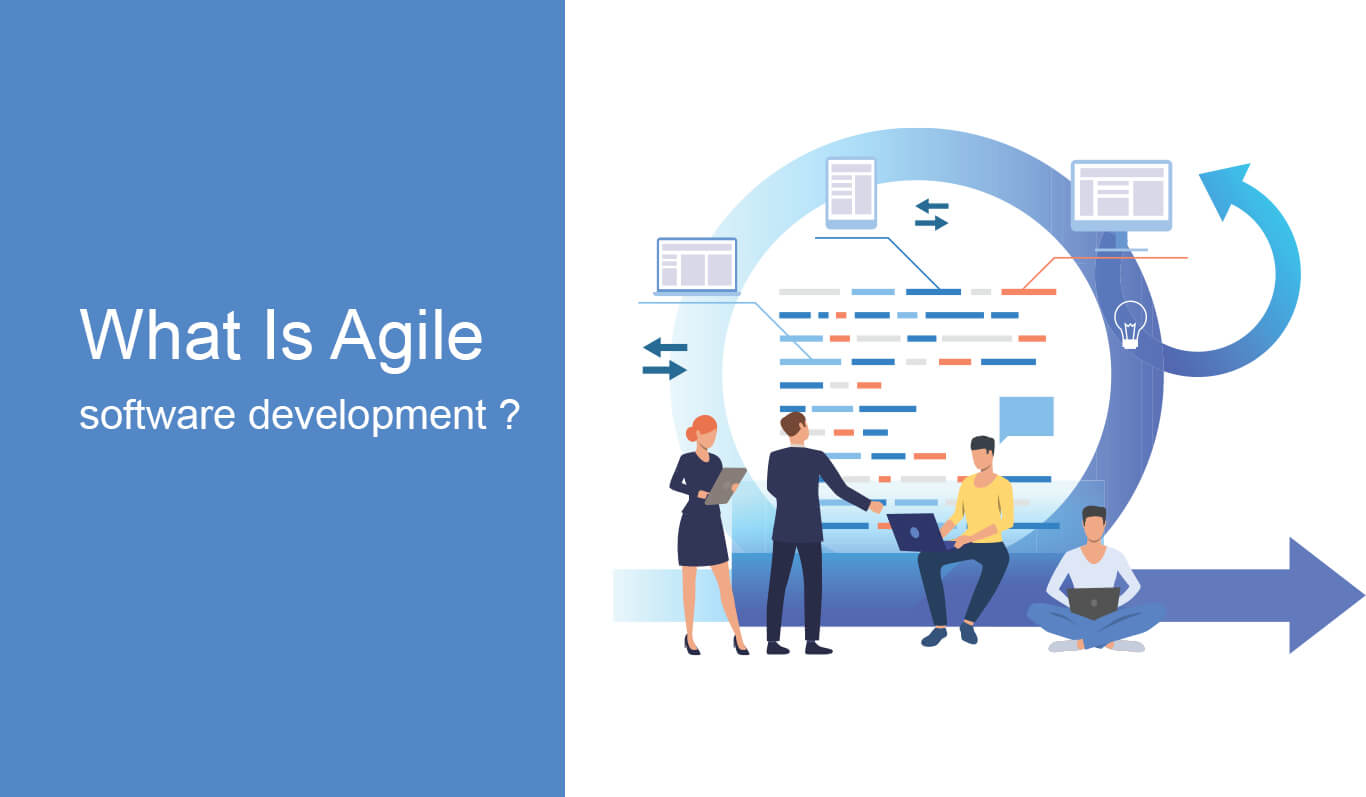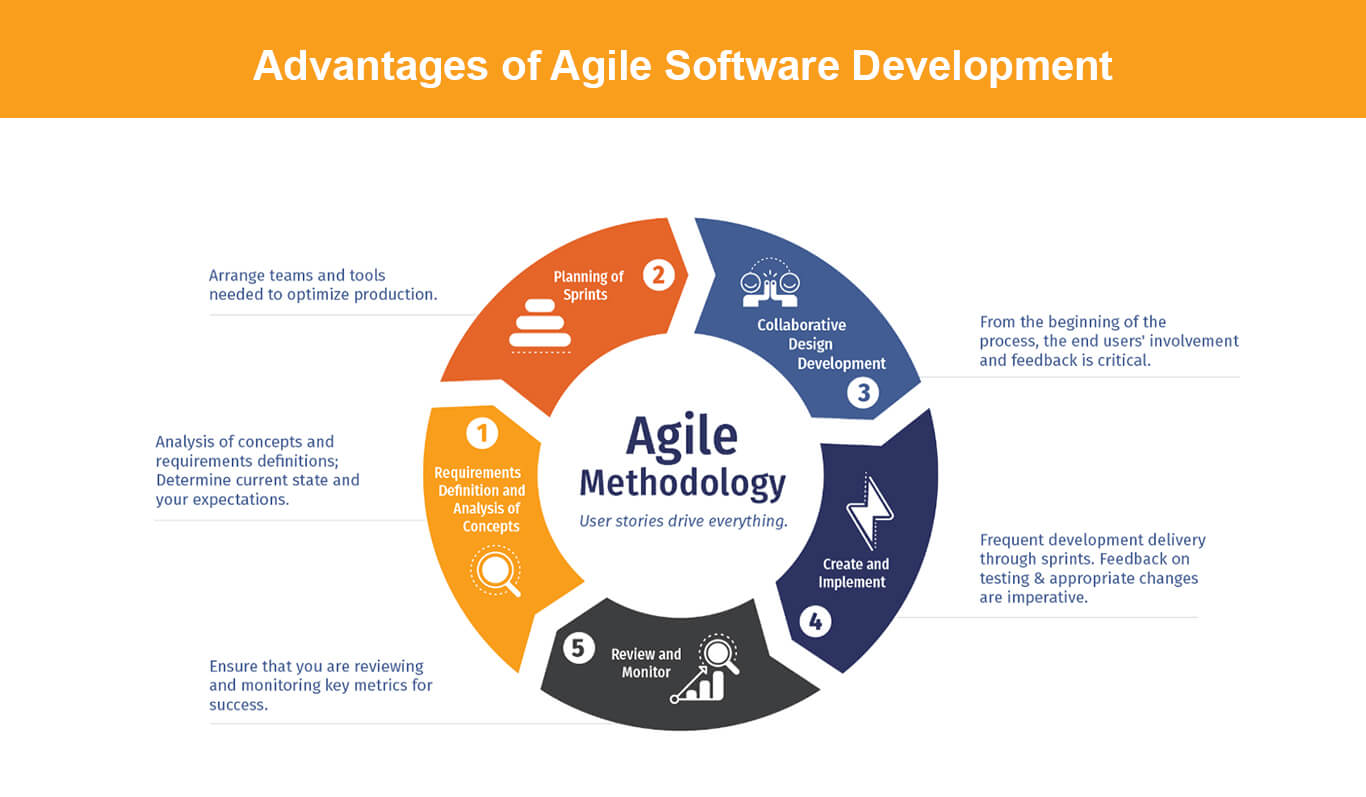Boosting Product Quality and Creating Faster ROI with Agile

The Agile methodology has firmly established itself as one of the most preferred methodologies for the development of IT products. With its many advantages, this method is arguably the most efficient and sought-after approach among the many available in the IT industry. The effective development of outstanding products is largely driven by Agile Methodologies such as Scrum and Kanban in companies of all sizes and configurations. IT companies follow Agile methodologies with aplomb, as any project planner/manager will confirm.
What Is Agile Software Development?
A sprint is an agile development cycle that breaks up a large software project into smaller, bite-sized development cycles. During each sprint, teams collaborate and develop certain features, before releasing a prototype to the customer.

After the customers review the increment, the team implements feedback before moving on to the next feature.
It's like testing your idea at every stage and getting feedback on how to improve it or make it more appealing.
What Makes Agile So Popular?
Agile methodology eliminates the need to invest more time in changes. By doing this, teams can work directly with customers rather than with other teams. They can thus achieve a better and more tailored product.
From multiple perspectives, organizations viewed agility as superior to the Waterfall method. Automotive, manufacturing and IT industries also use Agile methodology.
There are several reasons why the Agile Methodology is so popular.
Agile methodologies are delivering a lot of benefits to organizations and Project Management (PM) teams.
The project management team follows this flexible method due to the following reasons:
- It uses a development approach to adapt to changes. As a result, teams can learn from each iteration.
- Using agile methodology, teams can present prototypes and improve them through iterations.
- Collaboration is at the core of agile development.
- Agile Methodology allows teams to identify functions and work on them efficiently.
- In response to end-user feedback, teams can make changes quickly.
- Each iteration is accompanied by quick feedback.
- Members of PM teams can work effectively while being creative by using agile methodologies.
- The project can be improved with the customer and end-user feedback.
- A prototype can be created for a version of the project that is upcoming.
- Because Agile is a flexible approach, the PM team is more productive.
A Few Relevant Statistics
This was the longest-running agile report, published in April 2018. It was discovered that:
- Among 46% of respondents, the agile method was chosen because of its enhanced software quality.
- Business improvement accounted for 49% of the reasons.
- A majority of respondents cited "increased productivity" as their primary motivation.
- Approximately 64% of respondents said agile helped them manage changing priorities.
- According to 75% of companies, adopting agile means accelerating software delivery.
- Interestingly, 17% of companies chose the agile method to manage distributed teams.
The Advantages of Agile Software Development

Transparency: Agile software development enhances your team's transparency, which is one of its greatest advantages. Teams and cross-silo collaboration are key components of agile.
There are often stand-up meetings to plan and start each day. This is a great advantage for the team. This makes it easy for everyone to know how the project is going against the scope and if there are any obstacles they need to fix.
It's less risky: With agile processes, productivity goes up, risks go down, defects go down, customers are happy, stakeholders are happy, and sustainable development means a more stable ecosystem.
You can fix problems as they arise with agile software development because you deliver the final product early and often.
Getting it to users on time: Team members work in sprints in agile development. In order to ensure everyone can see the immediate and attainable goals of the project, we break it down into manageable chunks ahead of time.
With sprints with a fixed schedule, it's easier to plan when deliverables will arrive. There's a more frequent and faster release of new features. This makes it easier to plan product releases and beta tests.
Put users and business value first: To define product features, agile methods use business-centric acceptance criteria.
The clearer the description, the better the product solution's value proposition, user flow, or feature set. By focusing on real users' needs, agile teams can build usable software, not just another piece of IT.
Quality is better: With agile methodologies, quality is guaranteed. As a result of testing in every sprint, bugs are fixed and efficiency is maintained. After multiple iterations, the team knows what works. In Scrum, Quality Assurance is part of the team.
It's everyone's job to write quality code. For the highest quality, teams need to be fully committed to agile. Keeping sprints short can increase team productivity and responsiveness - rapid communication results in better performance.
Boost your ROI faster: With agile app development, you can produce projects with fewer resources. Agile product management teams can deliver better products faster, be more efficient during development, and better match their end users' needs.
Agile methodologies could help you boost agile product development and elegant software quality at the same time.
Compared to agile methods, traditional software development methods are less flexible.
Decisions made faster: Because teams can always talk to each other, and each team member knows how the other is doing, they can make decisions much faster.
It's easier to have team meetings as issues come up in the shared space instead of having to schedule them in advance.
What Makes Agile Different?
Let's compare Agile and waterfall methods here.
Agile Method:
- The Agile process follows an incremental approach.
- Flexibility is one of the hallmarks of Agile. This means that they can also make changes after they have completed their initial planning.
- During agile development, testing occurs concurrently.
- Focuses on a synchronized and coordinated work culture.
- As part of the Agile methodology, requirements are expected to evolve and change over time.
Waterfall Method:
- The Waterfall process is sequential in nature.
- It is impossible to make changes to the development process once it has begun in the waterfall model.
- It is only appropriate to test during the testing phase of the project.
- The waterfall method does not focus on coordination and synchronization between teams.
- When working with the waterfall model, there is no room for change.
Final Thoughts
Teams that adopt an Agile mindset benefit from better adaptability as well as faster ROI. You may be better off with the Agile operating model if your software projects have a high level of uncertainty.
When it comes to Agile, Neetable leads the way!
With its innovative features, Neetable simplifies Agile project management.
FAQs
How does agile enhance ROI?
Iterative development delivers features incrementally so that development starts early, accelerating time-to-market. This results in a faster return on investment.
Does the Agile model help to improve the quality of code?
An Agile framework is a valuable tool for managers, team members, and clients. There are many benefits to Agile, from improving product quality to helping team members develop professionally.
What is the most important benefit of Agile?
Agile methodologies use iterative processes to manage projects, improving processes after each feedback or interval. Customized deliverables will likely result in a better user experience and increased customer loyalty.
Request a Quote
Categories
Popular posts
Best Practices for Software Product Engineering Every CTO Should Implement
2023-14-18How to Build Your Own On-Demand Carpooling App Services?
2023-08-25How to Start an On-Demand Fuel Delivery Business: A Comprehensive Guide
2023-07-28Empowering Miners: How Fleet Management Apps are Transforming the Mining Industry?
2023-07-21A Complete Guide to Develop a Food Delivery App for Restaurants in 2023
2023-07-08Mobile Apps Transforming the Travel Industry: A Game-Changer in Travel Planning and Experience
2023-07-07
